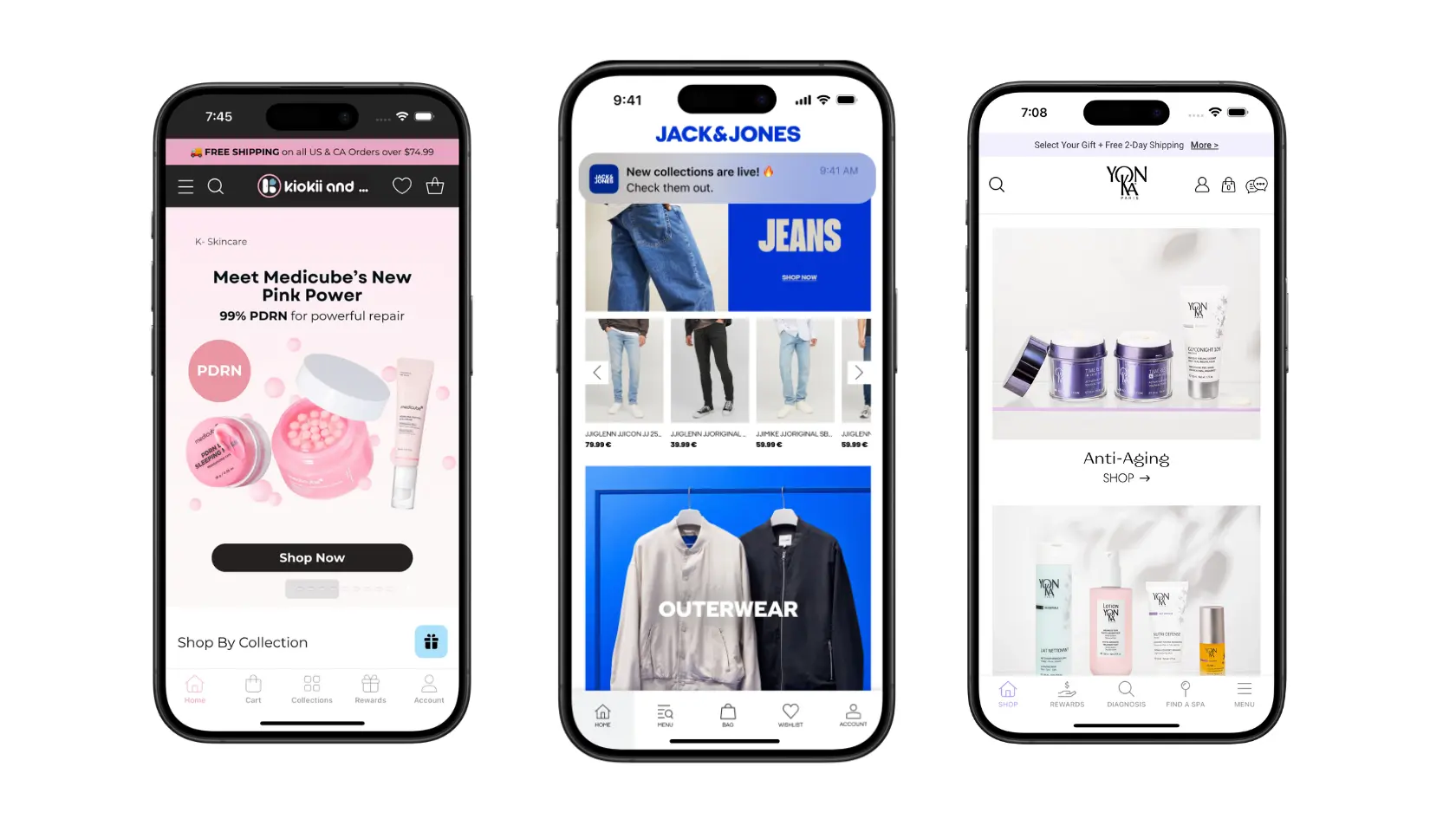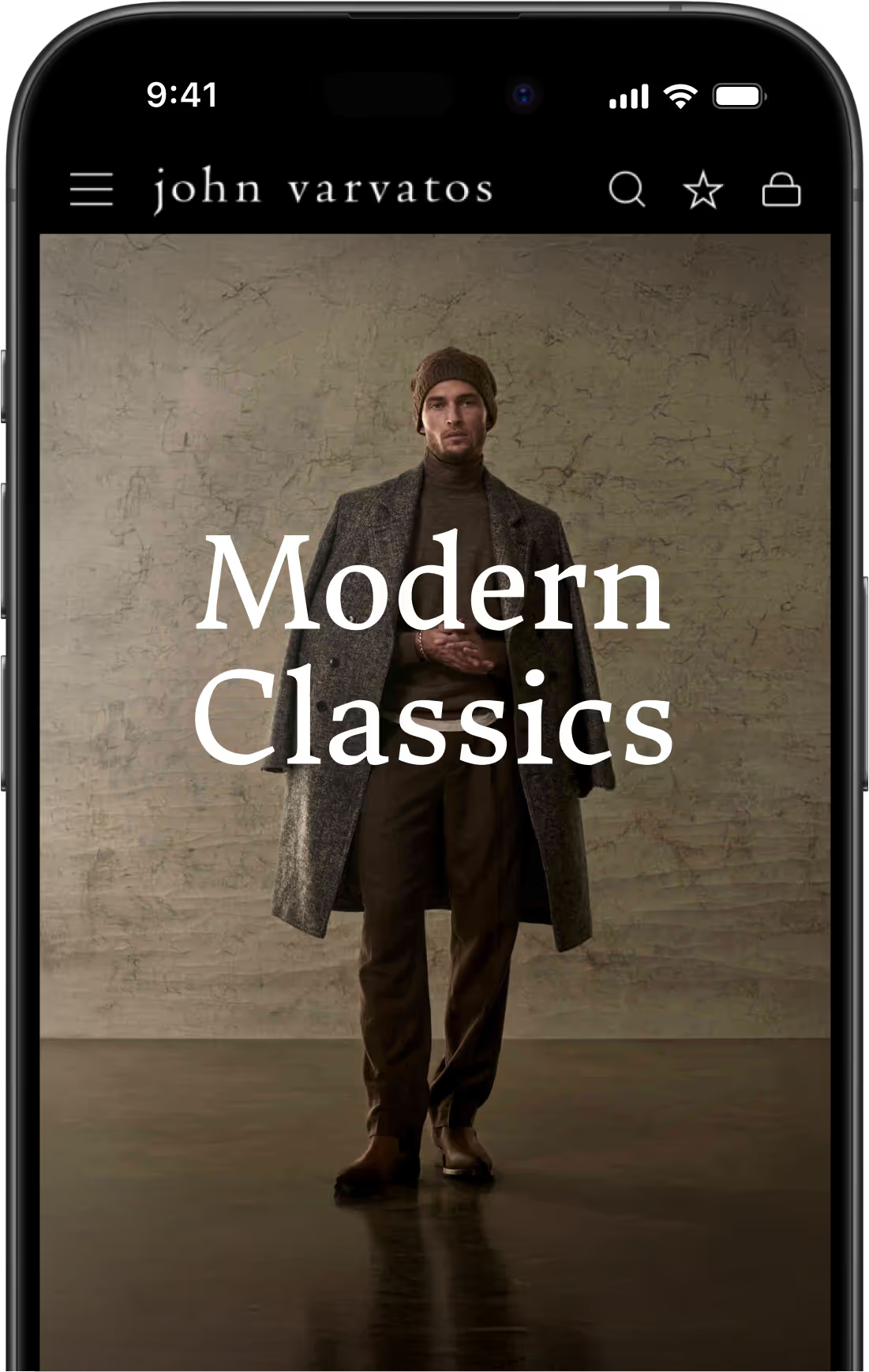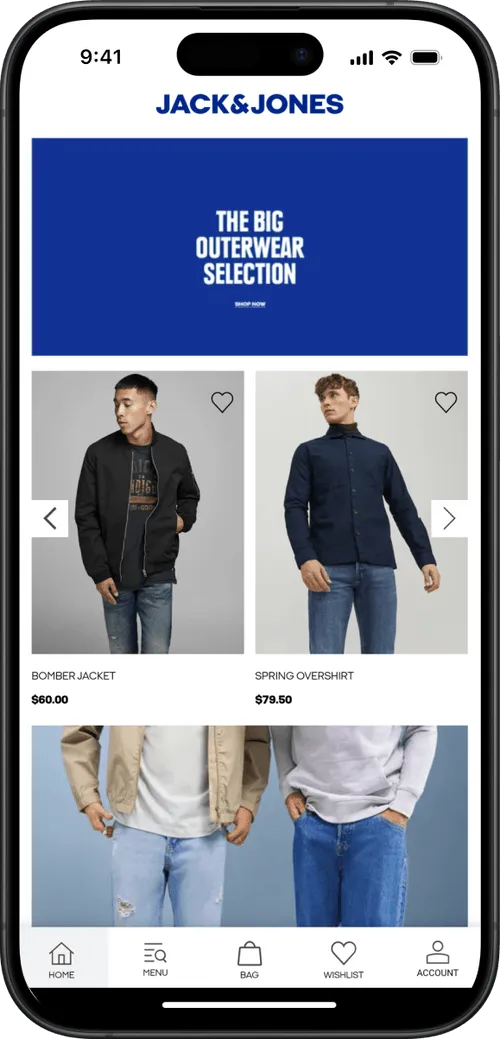Best App Builders, Services and Tools That Sync With Your Website
For web-first businesses, launching a mobile app can feel like adding an entirely new platform to manage (because it is).
But it doesn’t have to feel that way. Building an app that syncs with your website helps you avoid the operational headaches of running two distinctly separate platforms. You get the benefits of both, for the effort of one.
There are many ways to get there, though – from fully managed website to app services like MobiLoud, to custom API-driven setups. Read on and we’ll guide you through the options and help you choose the right one for your project.
Why Website-to-App Sync Is Non-Negotiable
If your website and app are not aligned, you risk operational chaos and a frustrating customer experience.
Customers expect your app to reflect the same products, pricing, content, and functionality as your website, instantly and consistently.
When that doesn’t happen, it leads to confusion and erodes trust.
Keeping your app and website in sync prevents:
- Duplicate work and wasted time. Without sync, every update has to be applied twice, from product descriptions to seasonal promotions.
- Data inconsistencies. Mismatched inventory or incorrect pricing can lead to overselling, unhappy customers, and lost sales.
- Slowed innovation. Simple CRO experiments or design changes on your site require extra steps to replicate in the app, discouraging agility.
- Customer experience breakdowns. If customers see one version of your business on the web and a different one in the app, they lose confidence fast.
When both platforms share the same data and updates flow in both directions (app purchases updating your site inventory in real time) you create a seamless, trustworthy experience while simplifying operations behind the scenes.
How It Works: Different Levels and Directions of Synchronization
There are many different ways to sync your website and app.
Some solutions offer light integrations that only sync specific data points. Others create a complete mirror of your site.
Understanding where each approach sits on the spectrum will help you choose the right solution for your business.
On one end, you have full parity, where the app and website are essentially two views of the same platform.
Every change (new products, content updates, design tweaks, and backend settings) flows seamlessly between them.
On the other end, there’s basic data sync, which may only handle specific elements like product inventory or orders.
It’s also important to consider the direction of sync:
- One-way sync – Updates flow from the website to the app (e.g., products update automatically), but in-app actions may not feed back into the website.
- Two-way sync – Both platforms talk to each other, so when a customer updates their account or places an order in the app, it instantly reflects on the website too.
Most businesses will need at least partial two-way sync to avoid duplicate workflows and maintain a consistent customer experience.
But the depth and complexity of that sync can vary significantly depending on the tools you choose.
Four Ways to Keep Your Website and App in Sync
Let’s dive deeper into the different tools, platforms and services to create a robust synchronization between your website and mobile app.
1. MobiLoud: Best for Full Website to App Sync

MobiLoud is the clear choice if you want your mobile app to stay perfectly in sync with your website.
MobiLoud converts your website into a mobile app for iOS and Android. It’s a fully managed process, it works with all platforms and tech stacks, and has helped over 2,000 businesses since 2013 build and maintain their own mobile apps.

Rather than rebuilding your site from scratch in an app builder or manually connecting APIs, MobiLoud apps fully mirror the website.
This approach gives you full parity between website and app:
- Backend sync – All user accounts, product data, orders, and integrations are shared, so there’s no risk of mismatched inventory or inconsistent experiences.
- Front-end sync – Every design tweak, CRO experiment, promotion, and seasonal update on your website instantly carries through to your app.
- One platform to manage – You keep working in your website’s CMS or ecommerce backend while MobiLoud ensures the app updates automatically.
It’s also a fully managed service. MobiLoud handles configuration, testing, publishing to the App Store and Google Play, and ongoing maintenance.
That means no broken APIs, no manual sync tasks, and no need to hire or train an in-house mobile team.
For high-traffic, web-first businesses (like ecommerce, digital publishers, membership sites), it’s the fastest, simplest, and most reliable way to launch and maintain a synced app experience.
Want to see what your site can look like as an app? Get a free preview now.
2. Template-Based Native App Builders That Sync Content
For businesses looking for a quick and budget-friendly way to launch an app, template-based app builders can be an option.
This includes general-purpose app builders like AppMySite, Glide and Adalo, or ecommerce-focused builders tied to platforms like Shopify.
These tools include built-in integrations to sync certain elements (products, pricing, and orders) through platform APIs and custom integrations.
However, their sync capabilities are usually partial rather than full:
- They sync core data only. Catalogues and basic order information may sync automatically, but design changes, custom landing pages, or CRO experiments often need to be recreated separately in the builder.
- They require ongoing manual work. Maintaining parity across two platforms means extra operational overhead, especially for marketing updates, content changes, and seasonal campaigns.
- You need to work around template constraints. Because these tools use pre-built layouts and limited customization options, your app may not fully reflect your brand experience.
These platforms can work for smaller stores or those with simple, static product catalogs.
But for brands focused on growth, experimentation, and unique user experiences, they often create ongoing friction rather than reducing it.
3. Custom API Synchronization (for Full Control)
For businesses with strong in-house development teams or complex, unique requirements, building a custom API sync can work.
This approach typically involves connecting your website’s backend to a fully native app built from scratch.
You’ll use platform APIs (such as Shopify’s Storefront API or BigCommerce’s GraphQL API), or a custom headless setup configured in-house.
Advantages include:
- Maximum flexibility. You can design bespoke features and experiences that go beyond what template builders or off-the-shelf solutions allow.
- Your development team can determine exactly what data to sync and how it flows, ensuring your specific business needs are met.
- You control every line of code and can adapt the integration as your platform evolves.
But it comes with challenges as well:
- Building and maintaining APIs, along with separate iOS and Android apps, requires experienced developers, usually extending timelines to six months or more.
- Every update to your website or backend can break app functionality unless carefully monitored and managed.
- Ensuring smooth data flows and eliminating sync errors becomes a constant responsibility.
Custom APIs can be a powerful solution for enterprises with the resources and appetite for long-term technical ownership.
But for most businesses, they introduce more complexity than they solve.
4. Automation Tools (for Light Syncing)
For businesses with relatively simple needs or short-term projects, no-code automation tools like Zapier, Make (formerly Integromat), n8n, or Shopify Flow offer a way to sync specific data between a website and an app.
These tools act as middleware, passing data from one platform to another through predefined triggers and actions.
Here’s where automation works:
- Low-complexity tasks: syncing newsletter sign-ups, tagging new customers, or passing simple order data.
- Periodic or batch updates: moving data on a schedule rather than in real time, which can be useful for reporting or light content syncing.
However, again, there are limitations:
- These tools are not built for scale, and struggle under high transaction volumes or complex data flows like inventory and pricing updates.
- Automations can fail silently, causing delays or mismatches that directly affect customers.
- Automation handles tasks piecemeal; it doesn’t deliver the fully integrated experience customers expect from a mobile app.
Automation can fill gaps temporarily or power non-critical data syncs. But it’s rarely robust enough for core ecommerce or content apps where real-time accuracy and reliability are essential.
Want to talk over your project, and figure out what approach is right for your mobile app? Get in touch now and book a free consultation with our mobile app experts.
Choosing the Right Sync Strategy for Your Business
The right approach to syncing your website and app depends on your goals, resources, and tolerance for ongoing technical maintenance.
Each option offers different trade-offs:
Need full parity and zero extra workload?
MobiLoud keeps your app and website in perfect sync by using your site as the single source of truth. There’s no rebuild, no API maintenance, and no duplicate content management.
Prioritizing speed and budget over flexibility?
Template-based app builders can get you live quickly with basic data sync, though you’ll need to manually maintain content and design parity.
Have an experienced in-house team and unique feature requirements?
A custom API sync gives you full control but comes with high development costs and ongoing complexity.
Only need limited or periodic syncing?
Automation tools work for specific, low-impact workflows but aren’t suited for real-time, customer-facing apps.
-
The optimal solution balances ease of management with reliable, always-on sync.
For most businesses (especially high-volume businesses like ecommerce), MobiLoud is the best fit.
It delivers a fully native app experience, without creating an extra platform to manage or maintain. It’s a true sync – not an API that can break or miscommunicate – and it requires little to no setup and maintenance.
Ready to see what’s possible with MobiLoud? Get a free preview of your app now.
Next Steps
If your business is ready to launch a mobile app without doubling your workload or risking mismatched customer experiences, the best move is to start with a platform built for complete, effortless sync.
MobiLoud is the fastest, most reliable way to launch fully synced native apps without rebuilding your site or managing another platform.
In just 30 days, you can have an iOS and Android app live, built and maintained by our team so you can focus on running and growing your business.
Get a preview now to start on the path to having a fully managed, fully synced mobile app for your brand.
FAQs
Convert your website into a mobile app












